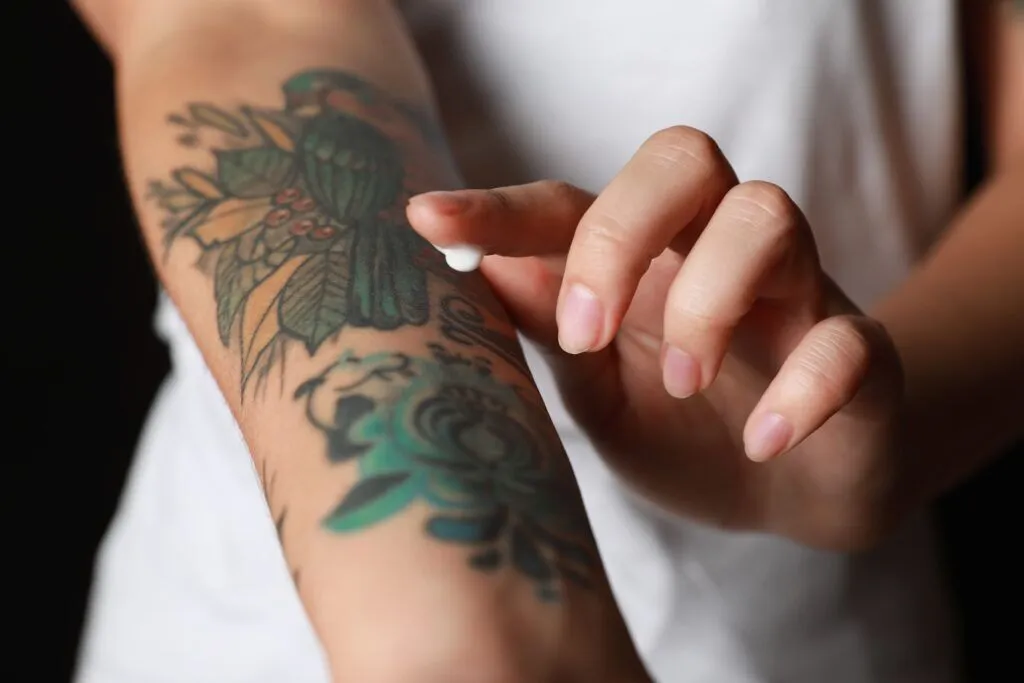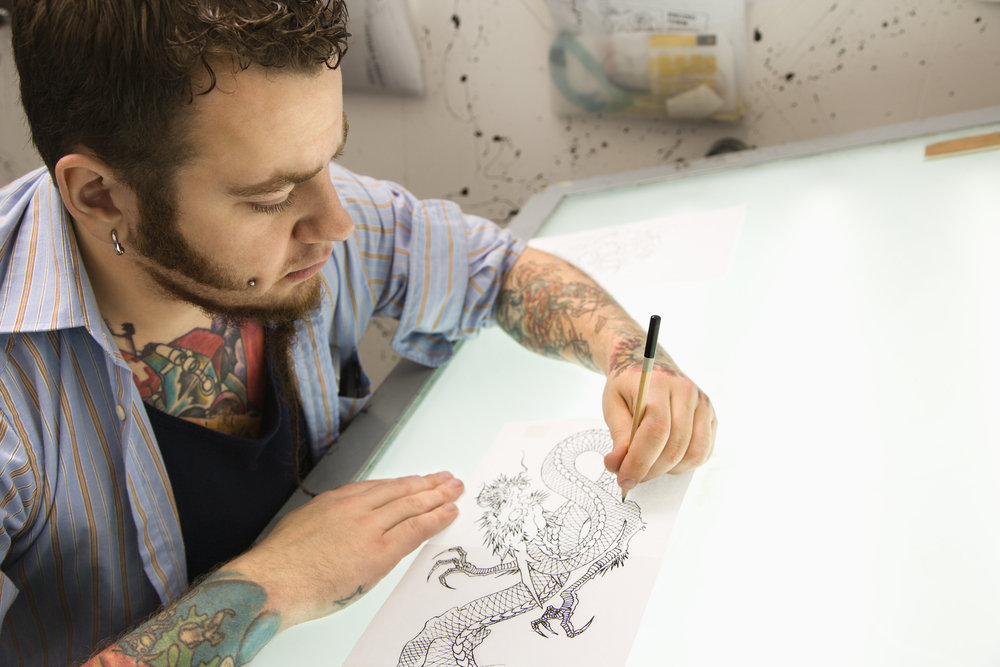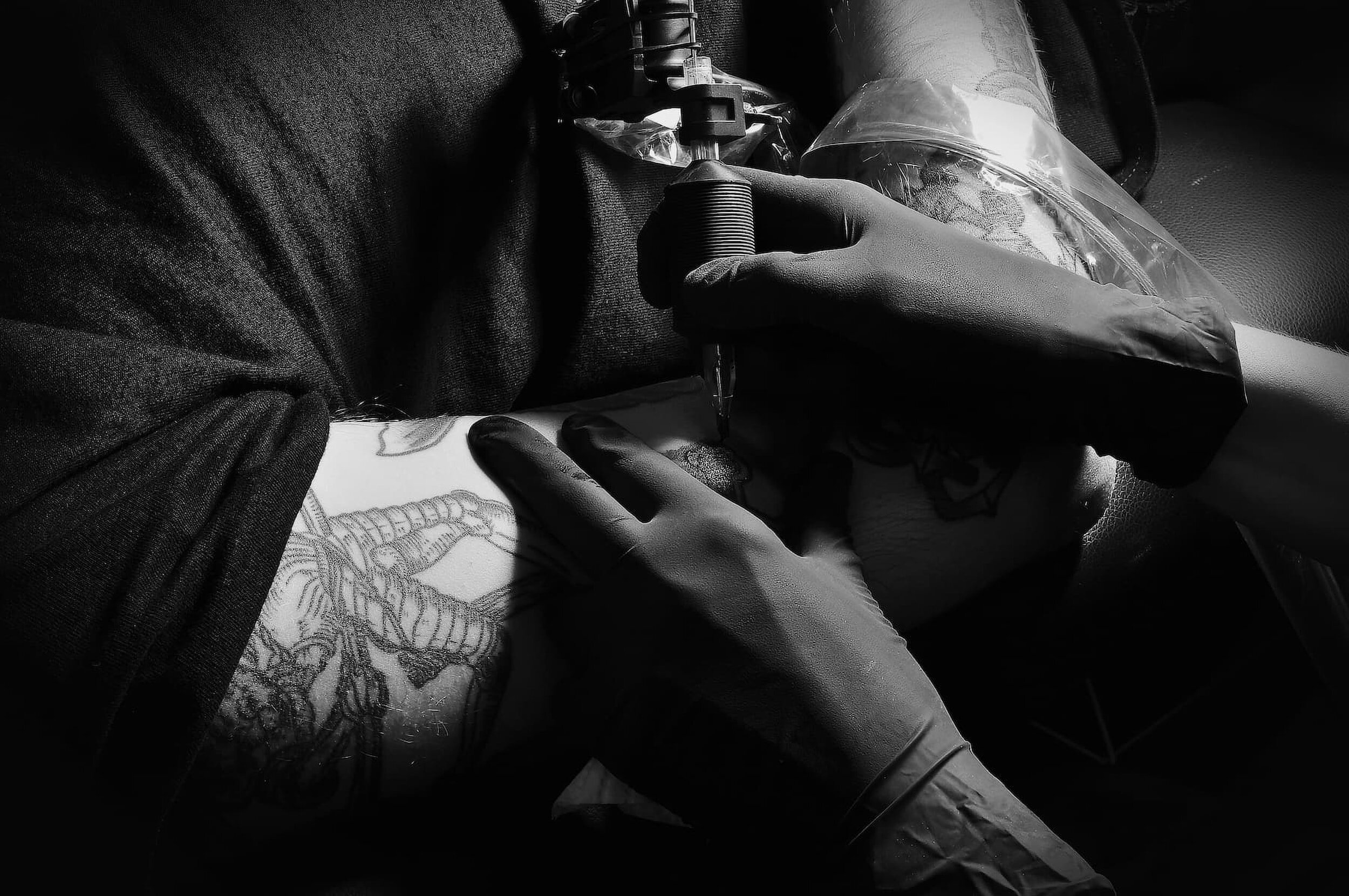Most ink aficionados dream away the incessant buzz of machines at the tattoo shop, head bursting with color and bold lines. Post-session, you can’t help but blink in awe at the vibrant reds and blues on your brand-new skin canvas and can’t wait to show it off.
In a few days, your tattoo begins to dull. What was once sunshine yellow is now strange, dreary mustard, and every line looks as if it was drawn on in pencil. Before you head back to the parlor for a retouch, first get to know the different aftercare stages—they could be the culprit!
Why Tattoos Appear Dull While Healing
As your tattoo scabs and peels, it will typically appear flat and faded. Remember, you’re donning an open wound, and your skin is likely to shed its damaged cells to restore its protective layer. These damaged cells will rest on the skin temporarily, creating a translucent and milky appearance.
If you’re braving the needle for the first time, don’t be alarmed to find that your tattoo looks years older than you expect it to—it’s just riding the waves of the healing process.
Stages of the Healing Process
Depending on the size, placement, and overall design of your tattoo, it may undergo one to three weeks of healing. During this process, you may encounter the following symptoms:
- Discharge and Redness
After your session, a reputable tattoo artist will wrap your new piece in a medical-grade bandage. Upon removal, your tattoo may leak plasma, and the skin will appear red. Expect your tattoo to seep, and don’t jump the gun—it isn’t gangrene.
- Itching
Yes—a tattoo hurts. It also itches. Late into the first or early into the second week of the healing process, your tattoo is going to itch and flake. Avoid scratching, as the dirt under your nails can deposit bacteria and cause an infection. Instead, apply a gentle lotion over the area to numb the itching sensation.
- Peeling
After week two of the aftercare process, your damaged epidermis will begin to peel. Upon flaking off, it’ll regenerate new skin cells—but worry not, your tattoo won’t peel along with it!
When a Dull Tattoo Requires a Touch-Up
Your tattoo will usually restore its vibrancy after the healing stages. However, if it retains a milky sheen, you could be experiencing one of the following.
- Leeching Ink
Depending on how dedicated you are to your aftercare regimen, a little bit of pigment may leak out of your skin. Leeching ink is particularly the case if you pick at your peeling tattoo.
Alternatively, an inexperienced artist may apply the ink at the wrong depth. Pro tip: always book your appointment with a licensed shop.
- Desaturated Color
A dependable artist will saturate the appropriate amount of pigment into the skin to prevent the tattoo from looking dull or toned down.
What if You Don’t Peel?
If there’s a stage of the healing process most ink enthusiasts dread, it’s the peeling phase. However, some may peel at a later time or not experience visual symptoms at all. If such is the case, don’t attempt to “induce” the peeling by picking at your skin.
Conclusion
No one type of skin or complexion will heal identically to another. Remember, penetrating the skin a thousand times per minute means it’s going to attempt to recover—and it may not always look pretty. For a tattoo artist you can depend on in Buffalo, NY, book your appointment with Lucky Deville Tattoo Co. Our experienced artists are dedicated to enhancing your skin canvas and ensuring that your piece remains vibrant over the years.



